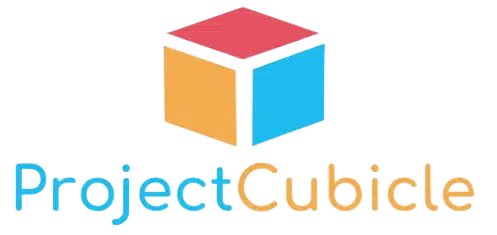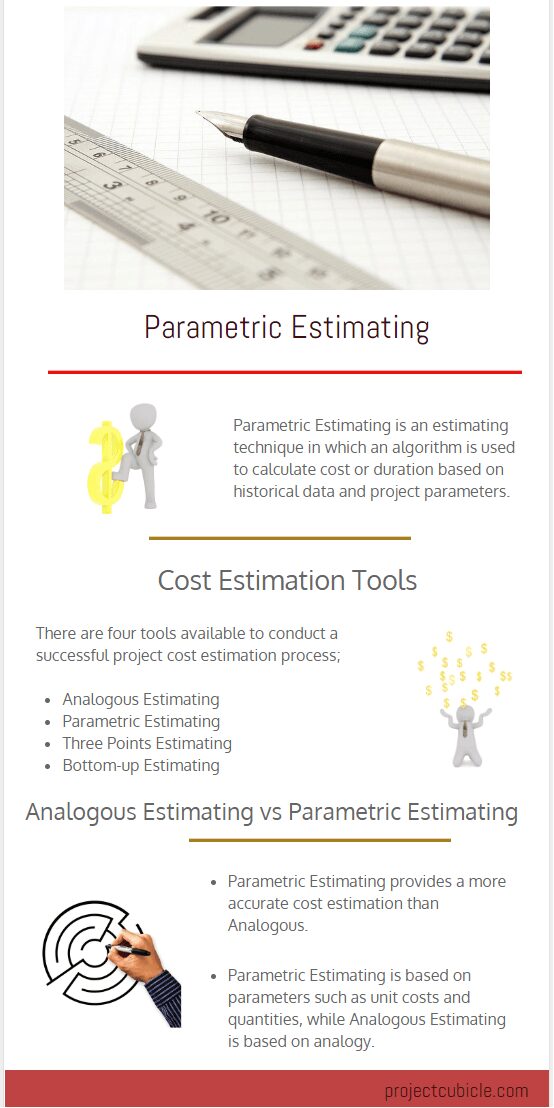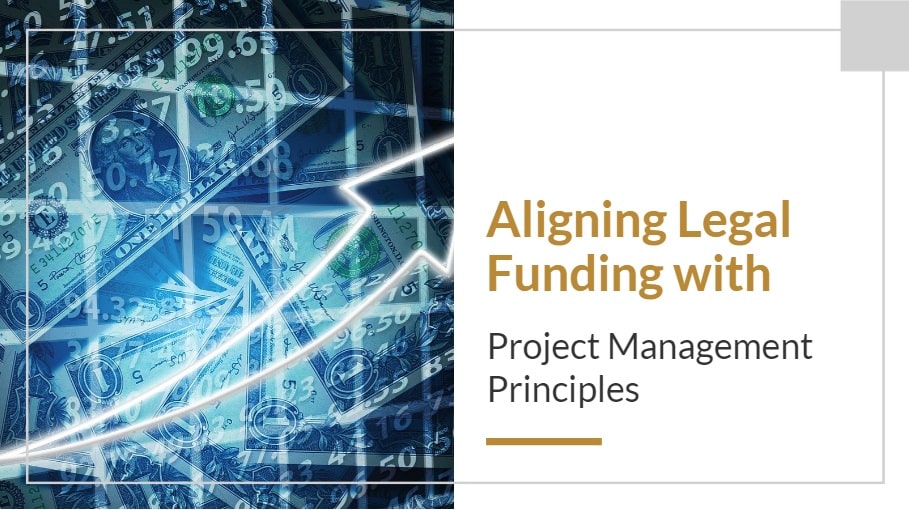Cost and duration estimations for a project can be very important tasks. It is often difficult to determine each of them without using the right tools and techniques. Parametric Estimating is a useful technique that is applicable to both cost and duration estimations for a given project. It provides many advantages to project teams because of its simplicity. It is applicable to many industries such as Engineering and Construction. Unlike analogous estimating, parametric estimating uses the relationship between variables to calculate the cost and duration of the project. In this article, we will discuss parametric cost and duration estimating with examples to help you to pass the PMP Certification Exam. And talk about how it differs from analogous estimating.
Table of Contents
Cost Estimation Tools
Estimating costs correctly is one of the most important processes in any project’s life cycle. It is the process of forecasting the project’s costs using established methods and techniques based on what is known today. In other words, it is the process of forecasting the cost of resources required to complete project deliverables. Before discussing Parametric Estimating in detail, let’s focus on other project cost estimation methods.
There are four tools available to conduct a successful project cost estimation process;
- Analogous Estimating
- Parametric Estimating
- Three Points Estimating
- Bottom-up Estimating
Although both tools focus on estimating the project costs, their precision level differs. If we make sorting between the above tools, bottom-up estimating provides the most accurate results while analogous estimating provides the least. Note that, analogous, parametric, and three points estimating are used both in duration and cost estimates.
What is Parametric Cost Estimating?
Assume that you are working as a project manager in a company that completes various projects every year. What would happen if other projects of your company begin to fail? What advice would you give to other project managers to prevent project failure? Most probably you will suggest them to utilize accurate cost and duration estimating for their projects using rates from similar past projects.
Parametric estimating is the task of looking at past projects to get a good estimate of how long a current project will take and how much it will cost. It also allows you to measure individual tasks within the project to get a more accurate cost and time frame.
In order to use the parametric estimating tool, you need to match up your current project’s metrics with historical data. For example, you need to calculate each unit to be produced in order to compare the resource usage of a similar past project. Thus, you will determine manpower and machinery to produce each of those units. Parametric estimating relies on historical project data to estimate the current project costs and durations.
Parametric Estimating Example
Assume that you are a board member of a construction company that will handover a real estate development project with the following components;
- Engineering & Design
- Construction
- Sales and Marketing
In this parametric estimating example, we analyzed past projects and gathered historical data. For Engineering, you will create a team with ten professionals. They are experienced in design and quality management. Hiring one professional will cost 250.000 USD in the course of the project. That means ten professionals will cost 2.500.000 USD. For sales and marketing, you will hire two sales assistants at a cost of 300.000 USD (150.000 each) and there will be 2000 flyers printed up at a cost of $2 each.
The project comprises ten five-story house building with 2.200 square meters each. According to historical data gathered from your similar past projects, the cost of building a five-story house with a luxurious finish would be $500 per square meter. However, all the past projects have been completed three years ago. So, you need to increase the estimated unit cost by %10 considering markups.
Finally, parametric estimating will be as following;
| Discipline | Cost Item | Quantity | Unit Cost | Total Cost |
| Engineering & Design | Hiring Professionals | 10 | $250.000 | $2.500.000 |
| Sales & Marketing | Hiring Sales Assistants | 2 | $150.000 | $300.000 |
| Printing & Distributing Flyers | 2.000 | $2 | $3.000 | |
| Construction | Ten Five-Story House Building | 22.000 | $550 | $11.000.000 |
| TOTAL COST | $13.803.000 | |||
Accuracy
Parametric estimating is often considered quite accurate because it relies on real past project experience. However, if the parameters or the parametric values are calculated incorrectly, the cost estimation will be wrong. Therefore, the accuracy levels of the unit costs and quantities must be correct.
How to Gather Historical Data?
The focal point of making parametric estimates is to gather historical data from various resources. You can use the actual costs of projects that have been completed by your own organization. Another resource can be the parametric values of other projects external to your organization. However, this includes risks because don’t know the underlying variables behind actual costs or what caused unexpected costs. Beyond these, industry publications can also provide reliable information that you need to make a parametric estimation.
Analogous Estimating vs Parametric Estimating for PMP Exam
As we mentioned in the first paragraph, this is an important concept from a PMP Certification Exam point of view. You may encounter one or more questions regarding the differences between analogous and parametric estimating during the exam. Although both techniques rely on historical information, their accuracy level is different.
- Parametric Estimating provides a more accurate cost estimation than Analogous.
- Parametric Estimating is based on parameters such as unit costs and quantities, while Analogous Estimating is based on analogy.
Conclusion
Cost estimation is one of the most fundamental aspects of Project Management. It is obvious that you will encounter some questions regarding analogous and parametric estimating during the PMP Certification Exam. Although both techniques use historical data to construct the estimates, the processes they each use are completely different. Many professionals mistakenly think that Analogous estimating does not need historical data. Using historical data is the similarity of both techniques. In this article talked about definitions, detailed description, and examples of these cost estimation techniques. If you want to add or share anything, please use the comments section below.
Further Reading
Go parametric to reduce the “hectic”

Vice President, İntelligent Design & Consultancy Ltd
Over 12 years of global & rich experience in Portfolio & Program Delivery Management in leading & managing IT Governance, PMO, IT Portfolio/Program, IT Products, IT service delivery management, Budget Management, and more.
















Parametric Estimating brings more accurate cost estimations, so it saves money for companies.
Parametric Estimating Examples for PMP is a topic to must be care.